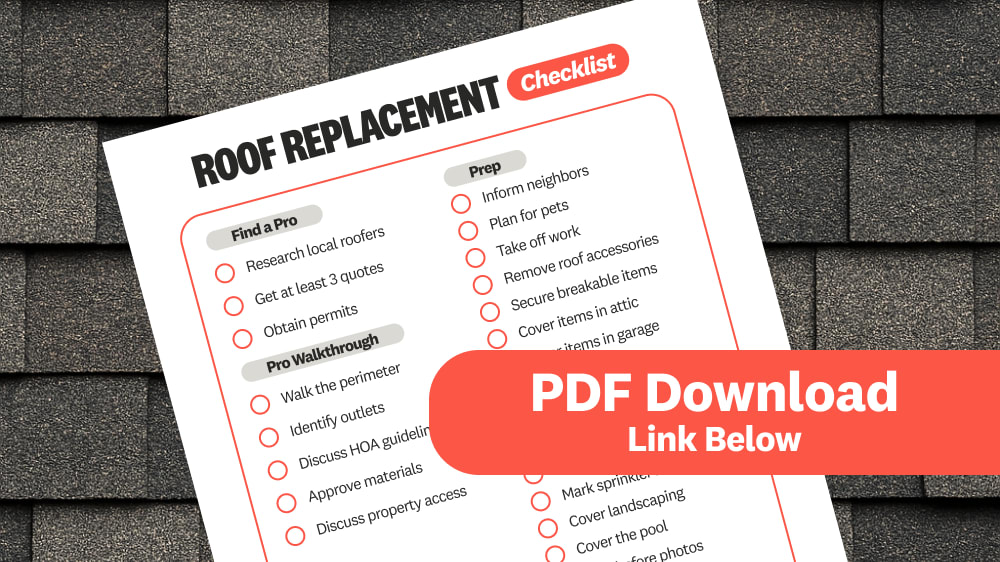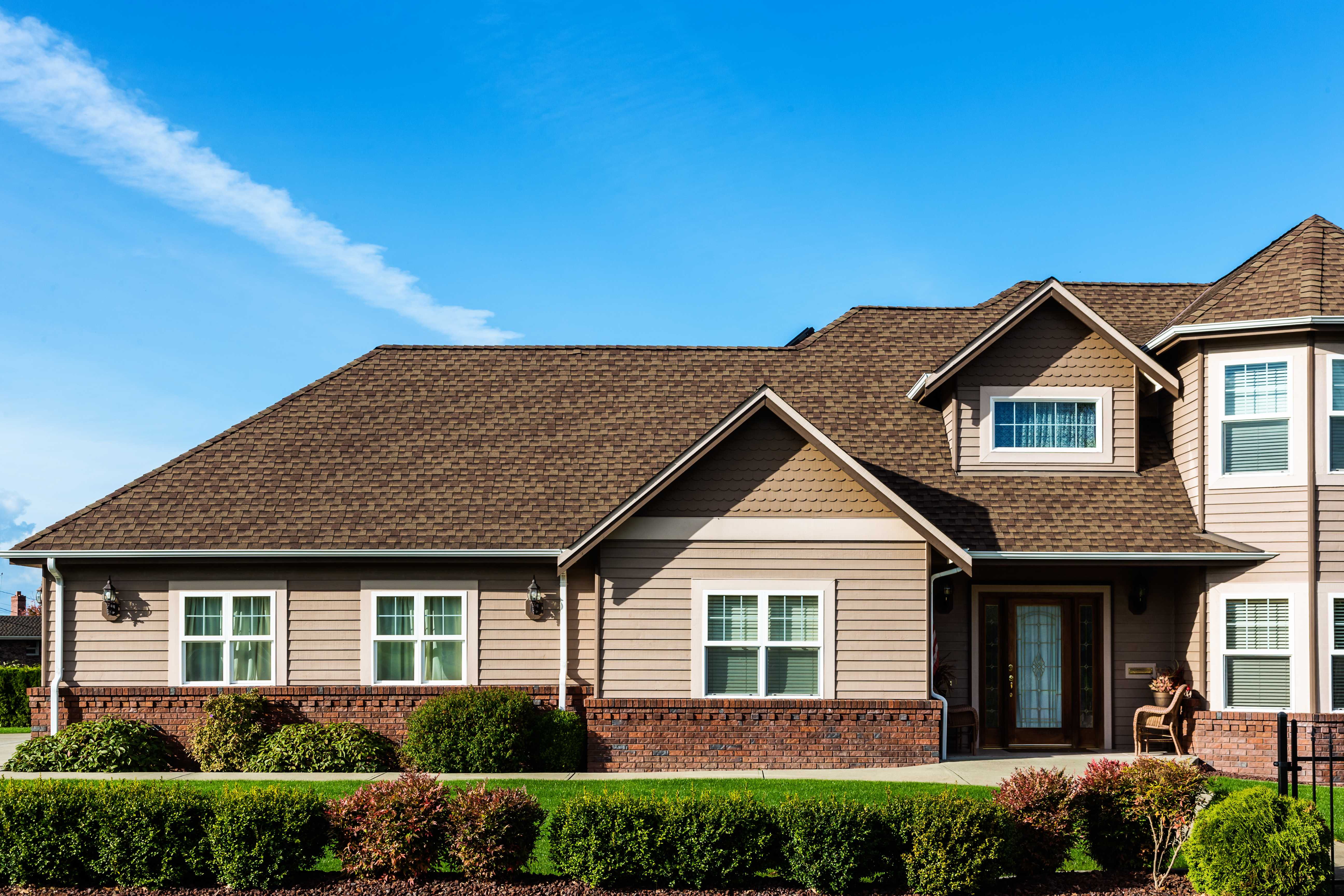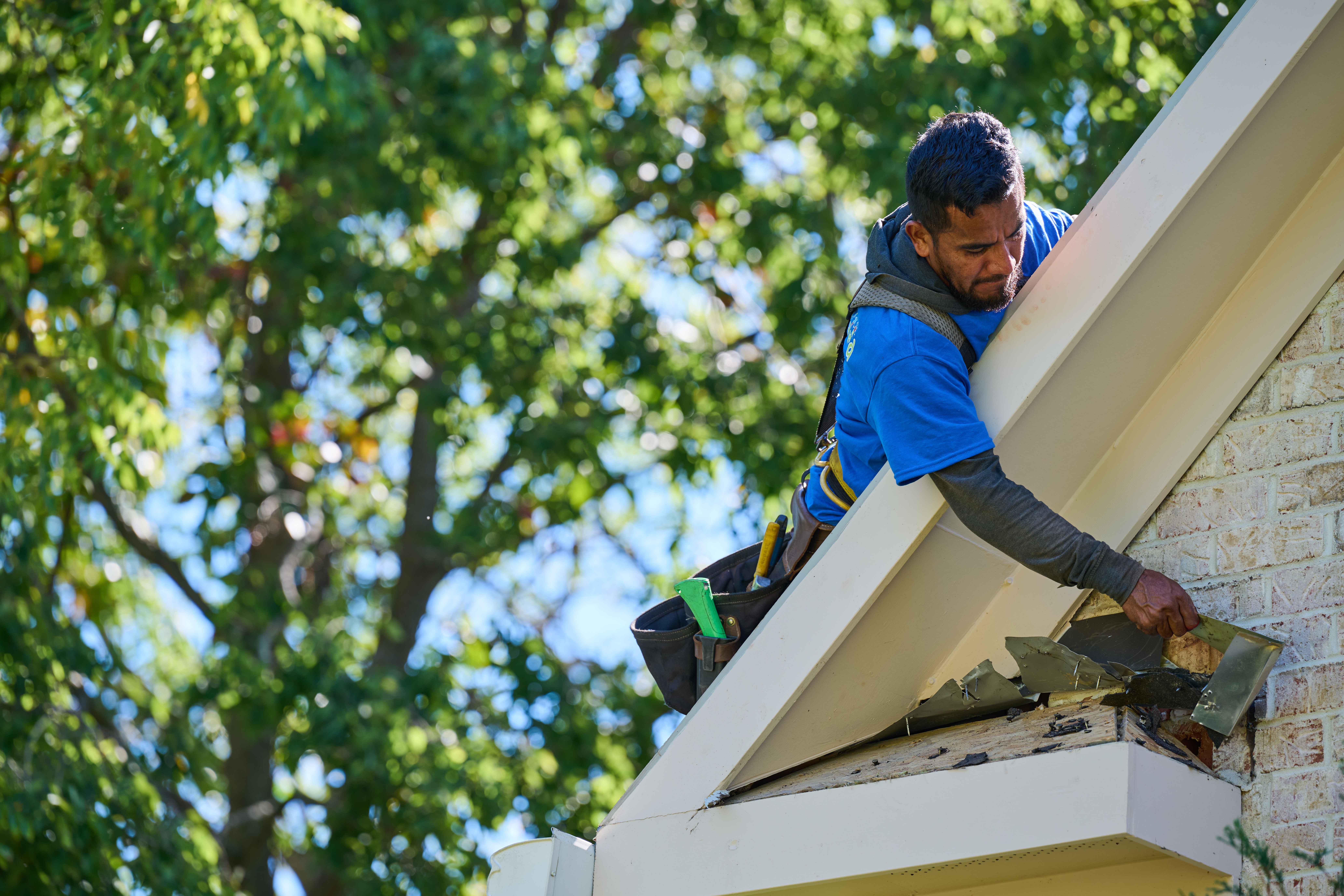
A new metal roof can add a unique touch to your home’s curb appeal and help maximize efficiency. Learn about metal roof costs and what affects your total.
Stay on top of your project


Roof replacements don't happen often, so it's likely not a project you're used to. If your roof needs repairs or full replacement, it helps to have a checklist of tasks to ensure the job goes smoothly. We've created printable roof replacement checklists to help protect your property and your family during this massive project.
You can break up your roof replacement checklist tasks into categories to help you manage them all at the appropriate times. The process starts with finding a roofer, then making preparations, walking through the job site, and finally handling post-replacement to-do items.

Your home's roof is its first protection against the elements, so you want to ensure the job gets done properly by a team of qualified professionals. Take these steps as you look for a roofer:
Research roofers in your area: Find licensed and insured companies with good reviews and proven experience working on homes.
Get several quotes: Talk to at least three contractors to compare prices and warranties.
Obtain permits: Determine what permits are required and who's responsible for obtaining them. Contractors often do this, but not all do.
Once you have a roof replacement on the calendar, there are many steps to take to prepare for the project:
Inform neighbors: Give neighbors a heads-up about the extra noise and traffic.
Plan for pets and family: You may wish to get pets and family members out of the house for the day to avoid the loud noises.
Plan for work: You may wish to take the day off or work off-site instead of from home. Be sure to maintain contact with your roofers.
Remove roof accessories: Contact the proper pros to remove and replace satellite dishes, solar panels, or other mounted items.
Remove breakable items from walls and cabinets: Vibrations from roof removal and installation can knock items out of place.
Cover items in the attic and garage: Place a drop cloth over your floor and stored items to keep dust from falling on them.
Turn off the AC: Your roofers should build a temporary cover for your AC unit. Ensure that it's off to avoid danger.
Mow your lawn: This makes it easier to find nails that may fall during roof removal.
Move vehicles: Your roofer's truck and materials may block your garage or driveway, so ensure you have access.
Move outdoor items: Get plants, furniture, lighting, grills, toys, and décor away from your home's perimeter.
Mark sprinkler heads: If you have built-in sprinklers, put bright tape or flags on each head to help contractors avoid them.
Cover landscaping: Put netting over flower beds to prevent falling debris from damaging your plants.
Cover your pool: Put your pool cover on to prevent debris from falling in the water.
Take photos: Document the condition of your driveway and home exterior in case you need to file a damage claim.
At some point before your project begins, you should meet on-site with your contractor to walk through the property and go over the following details:
Walk the home's perimeter: Point out areas for your roofers to avoid or take care with.
Point out outlets: Let your roofer know of electrical outlets available for their use, whether outdoor or indoor.
Discuss timing: Agree on dates and timeframes for each aspect of the project, including dumpster drop-off and removal.
Discuss HOA guidelines: Make your roofer aware of pertinent rules in your community.
Approve all materials: Once materials are delivered, verify the brand, color, and style are correct before work begins.
Discuss property access: Confirm how contractors will navigate locked gates and other obstacles.

Once your roof replacement is complete, there are still a few steps to take to ensure a job well done:
Inspect the property: Look at your lawn, landscaping, gutters, driveway, and patios to ensure workers have caused no damage and removed all debris.
Inspect the roof: Ask for an aerial drone view or photos of the work done to your roof, and ask any questions you may have.
Obtain paperwork: Get a copy of the building permit, work contract, warranty, or other coverage for the job.
Reinstall accessories: Contact the providers to reinstall satellite dishes, solar panels, or other mounted items.
The average roof replacement costs about $8,600, with most ranging from $5,800 to $11,600. Factors like roof size and material have the biggest impact on cost. Asphalt shingles are among the most affordable roofing materials, while slate, tile, and wood shake are the most expensive. Costs per square foot can range from $4 to $11 per square foot, and the most expensive roof replacements can cost $22,300 or more.
When you hire a roof repair pro near you, most will charge between 15% and 25% for labor. While this means you can technically save thousands by doing the work yourself, we do not recommend it. There are safety hazards when working on roofs, and DIY work can void your roof warranty. Plus, installation mistakes can lead to damage that is extremely costly to repair.
From average costs to expert advice, get all the answers you need to get your job done.

A new metal roof can add a unique touch to your home’s curb appeal and help maximize efficiency. Learn about metal roof costs and what affects your total.

While a steel roof can cost a significant amount, it’s a hardy roofing option with great curb appeal. Learn all the factors that influence how much a steel roof costs.

Let the light flood into even the gloomiest attics and transform the look of your home. Here's how to calculate the cost of adding a dormer of any style.

If you notice your roof leaking, it is important to act fast. A new leaking roof could cause tremendous damage to your home if left unrepaired.

A bad roofing job can compromise the safety of your house. Learn the signs of a bad roofing job so you can nip issues in the bud.

DIYing roof repairs can save you thousands over the life of your roof. Learn how to replace damaged roof shingles to get the job done correctly.